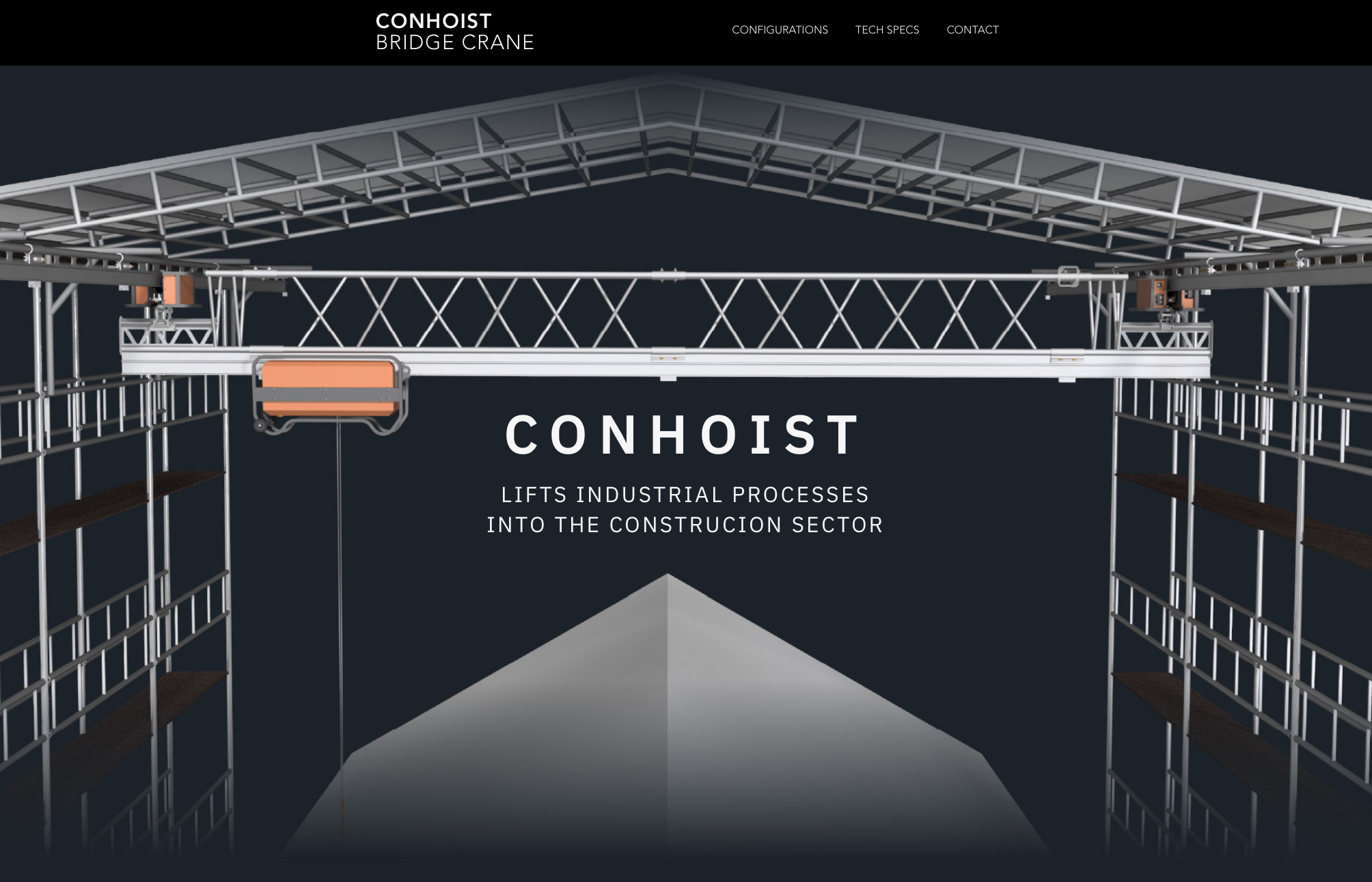When working with overhead travelling cranes, it's important to be aware of the applicable rules and legislation governing their use. Overhead travelling cranes are powerful machines often used in construction and industrial operations to lift heavy loads. As working with overhead travelling cranes involves potentially dangerous situations, it is necessary to adhere to strict safety rules and standards to protect both operators and other people in the workplace.
In this blog post, we'll dive into the most important regulations for the use of overhead travelling cranes and how to ensure that your company follows them correctly. We will also present Conhoist's mobile overhead crane system, which fulfils these regulations and can help improve both safety and efficiency in the workplace.
1. What is an overhead travelling crane?
An overhead travelling crane is a lifting device typically used to lift and transport heavy loads over short distances. The crane travels along a horizontal path, making it ideal for use in construction and manufacturing environments. Overhead travelling cranes come in different types, such as standing or hanging cranes, and they can be electrically powered or manual.
2. Overhead travelling crane rules and safety regulations
The use of overhead travelling cranes is regulated by a number of safety rules and standards that must be followed to ensure that the crane is operated safely and efficiently.
Labour Inspectorate rules
In Denmark, the Danish Working Environment Authority sets the primary rules for the use of overhead travelling cranes. According to the Danish Working Environment Authority's Machinery Order, all cranes - including overhead travelling cranes - must meet the requirements of the relevant Machinery Directive. This means, among other things:
- The crane must be properly installed and maintained.
- Regular inspection and maintenance should be performed to ensure that all parts are working properly.
- Operators must have the necessary education and training in the use of the crane.
- Load limits and safety factors must be taken into account.
Safety training for operators
Overhead travelling crane operators must undergo thorough safety training to understand both the physical operation of the crane and the safety measures needed. This includes knowledge of:
- Safe lifting technique and correct loading of the crane.
- Use of proper protective equipment such as helmet, safety shoes and goggles.
- Emergency procedures in case of crane failure or accident situations.
Ongoing inspection and maintenance
Regular inspections and maintenance of the overhead travelling crane is a key part of maintaining safety. It's important to check the crane's mechanics, electrical systems and that all safety features are working properly.
3. What rules apply to mobile overhead travelling cranes?
When it comes to mobile overhead travelling cranes, such as those used by Conhoist, there are special rules and considerations. One of the great advantages of mobile overhead travelling cranes is their flexibility and mobility, but this requires extra attention to stability and safe operation.
Rules for mobile overhead travelling cranes include:
- Stability and security: It is important that the mobile overhead travelling crane is stably positioned, especially if operating on uneven surfaces. Appropriate support structure and securing mechanisms must be used.
- Lifting capacity: Mobile overhead travelling cranes like those from Conhoist have a specific lifting capacity that must not be exceeded. It is essential to know the maximum capacity of the crane and not overload it to avoid accidents.
- Safety instructions: When using mobile overhead travelling cranes, clear safety instructions must be given to operators, especially when transporting or placing the crane in new locations.
4. Conhoist's mobile overhead travelling crane system - A solution for your workplace
Conhoist offers an innovative, mobile and battery-powered overhead travelling crane system that is ideal for both small and large construction projects. This system can lift up to 800kg and is designed to be used under scaffolding for greater flexibility and work efficiency.
How Conhoist's system fulfils the regulations:
- Safety first: Conhoist's system is equipped with automated safety features that protect both operators and other people in the workplace.
- Easy to install: The system is easy to install and requires minimal set-up time, making it ideal for projects that require fast and efficient work.
- Mobility: The mobile design allows the overhead travelling crane to be moved between different work areas without having to interrupt work.
5. Conclusion
When working with overhead travelling cranes, it's important to follow the applicable regulations and safety standards to ensure both efficiency and safety in the workplace.
Overhead travelling cranes, like Conhoist's mobile solution, are an excellent choice for those who want a flexible, reliable and safe method of lifting heavy loads under scaffolding. Make sure your operators are properly trained and your equipment is well maintained to ensure a safe and efficient working environment.

